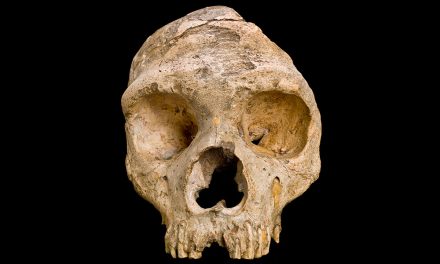Wallace’s Giant Bee (Megachile pluto) named after its discoverer Alfred Russell Wallace, is the world’s largest bee and until recently was thought to be extinct. Last seen in 1981, last month a group of scientists retraced Wallace’s steps and trekked into Indonesia to see if they could find the bee.
Their long trek paid off.
Check it out in the video below. It’s big (as long as an adult thumb), black, and wasp-like.
Natural history and conservation photographer Clay Bolt said that on the last day of the team’s five-day search on behalf of Global Wildlife Conservation, with everyone on the team having fallen ill, they stumbled across what they believed to be the bee’s nest.
Writing about the experience, Bolt said:
“I simply couldn’t believe it. We had discovered Wallace’s Giant Bee. My goal was to be the first person to make a photo of a living Wallace’s Giant Bee and I had achieved that goal.”1
Little is known about the newly rediscovered Wallace’s Giant Bee (also called “Raja ofu” or king of bees1) which is four times bigger than European honeybees but scientists are excited to learn. (Researchers did observe in the 80s that the bees build communal nests on termite dwellings.)
Bolt and teammate entomologist Eli Wyman, “hope to work with researchers and conservation groups in Indonesia to ensure protection for the giant bee.”1
SOURCE:











